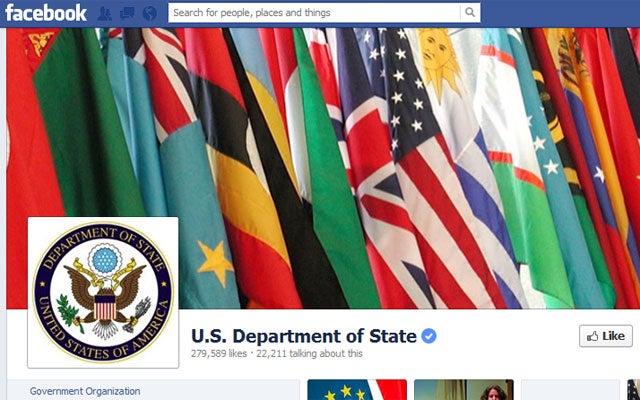How Many “Friends” Does the State Department Really Have?
Helle Dale /
A new State Department inspector general’s report accuses State of buying friends—or, more precisely, boosting its “likes” on Facebook to up to 2 million—by spending taxpayer dollars on Internet advertising to the tune of $630,000.
This is definitely not your father’s State Department at work.
Apparently having trouble driving traffic to its websites, in 2011, State undertook a major campaign to boost its numbers, including buying sponsored ads to increase its English-language Facebook page “likes” from 100,000 to more than 2 million and to 450,000 on Facebook’s foreign-language pages.
Yet the report states that all this digital public diplomacy fails to reach the desired audience of older decision makers and influencers: As few as 2 percent of fans actually interact with State’s pages.
Since then-Under Secretary for Public Diplomacy James Glassman in 2007 coined the term “Public Diplomacy 2.0,” the practice has caught on with a vengeance. The number of employees of State devoting their time to digital outreach—dealing with blogs, tweets, Facebook pages, and counterterrorism communication—has grown by leaps and bounds.
Social media’s appeal is easy to see: low overhead, impressive numbers (if you can get them), and appeal to younger audiences. How to make this communication effective and quantify its public diplomacy success has always been the problem.
The basic problem with State’s growing reliance on social media is that social media are, well, social. They are geared toward communication with friends and those with whom one might share a cause or interest. How many people can really say they “like” the State Department or look forward to seeing a post from a U.S. embassy? Informational postings from the U.S. government are one thing; social interaction is very much another.
The State Department on July 1 lost yet another Under Secretary for Public Diplomacy, Tara Sonenshine, who is returning to private life. No word on a successor, but one of his or her first tasks should be to review State’s digital media outreach.

